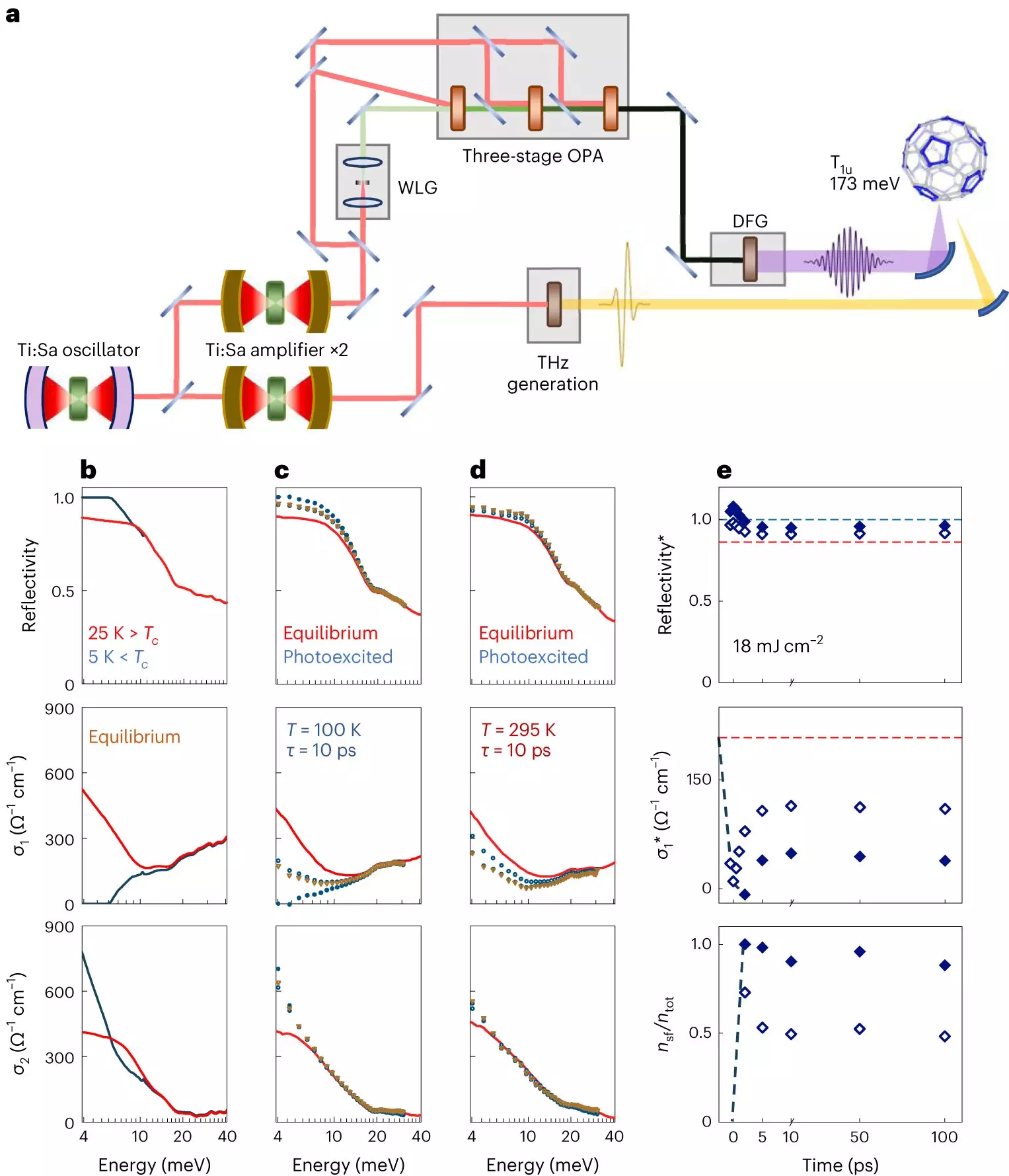The concept of superconductivity, the ability of certain materials to conduct electrical current with minimal resistance, has long intrigued scientists and researchers due to its potential applications in various technological fields. In recent years, there has been a concerted effort to enhance the superconductivity of specific materials, such as K3C60, an organic superconductor. The focus of this article will be on a recent study conducted by researchers at the Max Planck Institute for the Structure and Dynamics of Matter, Università degli Studi di Parma, and the University of Oxford, who have identified a novel strategy to enhance light-induced superconductivity in K3C60.
Researchers, led by Andrea Cavalleri, have been studying the superconductivity of K3C60 for several years. Previous experiments demonstrated the ability to induce the superconducting phase in this material using excitation photon energies ranging from 80 to 165 meV (20-40 THz). However, in their latest study, the team aimed to explore lower energy excitation in the material, specifically energies between 24 and 80 meV (6-20 THz). This was made possible through the utilization of a terahertz source capable of generating narrow-bandwidth pulses.
The underlying mechanism behind light-induced superconductivity in K3C60 is not yet fully understood. However, the researchers hypothesize that selected molecular vibrations, driven directly at their resonance frequency, couple with electronic states, leading to an enhancement of pairing and coherence necessary for superconductivity. Interestingly, the team found that this effect was particularly pronounced at a frequency of 10 THz, coinciding with a specific molecular vibration. This discovery represents a significant advancement in understanding the mechanisms behind photo-induced superconductivity in K3C60.
The results of the study are highly promising, as the photo-susceptibility of K3C60 was increased by two orders of magnitude. This significant enhancement opens up new possibilities for the development of light-driven quantum technologies. Moreover, the researchers were able to induce a 10 ns long-lived superconducting state at room temperature. This prolonged duration of photo-induced superconductivity holds tremendous potential for the future development of quantum devices powered by light.
While the recent study has shed some light on the mechanisms underlying light-induced superconductivity in K3C60, there are still many questions left unanswered. The underlying physics of the phenomenon remain elusive, and further research is required to elucidate the precise mechanism by which selected molecular vibrations couple with electronic states. Understanding these mechanisms could potentially unlock new strategies to enhance superconductivity in not only K3C60 but also other superconducting materials.
The research conducted by the team led by Andrea Cavalleri has revealed exciting new possibilities for enhancing light-induced superconductivity in K3C60. By leveraging a terahertz source to explore lower energy excitation, the researchers were able to significantly enhance the photo-susceptibility of this organic superconductor. This breakthrough opens doors to advancements in light-driven quantum technologies and offers the potential for the development of quantum devices powered by light. While many questions regarding the underlying mechanisms remain, this study represents a critical step forward in our understanding of superconductivity and its manipulation through light. Continued research in this field holds great promise for the advancement of various technological applications.


Leave a Reply